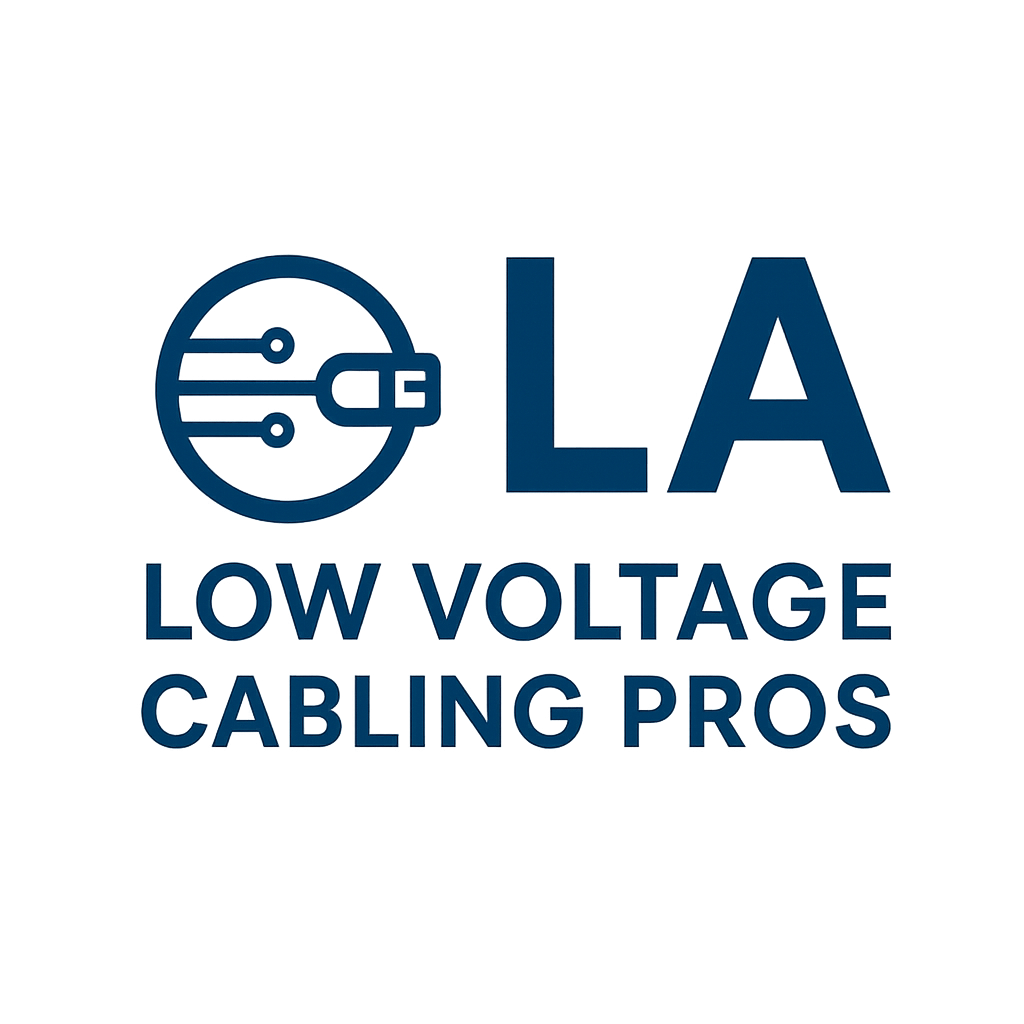T568A vs T568B Wiring Guide: Understanding the Difference for Reliable Network Connections
When it comes to network cabling, few topics cause as much confusion as T568A vs T568B wiring. These two color-coding standards define how Ethernet cables are wired, and choosing the right one is essential for maintaining a stable and compliant connection.
If you’re setting up or troubleshooting CAT5e, CAT6, or CAT6a cables, understanding the difference between T568A and T568B can save you time, frustration, and potential network issues. This guide breaks down everything you need to know in simple, practical terms. At LA Low Voltage Cabling Pros, we specialize in professional cabling solutions for homes and businesses across Los Angeles.
What Are T568A and T568B?
T568A and T568B are wiring standards defined by the Telecommunications Industry Association (TIA) under the ANSI/TIA-568 standard. They specify the order of the colored wires (pairs) inside Ethernet cables and how those wires are terminated into RJ45 connectors or jacks.
Each standard uses the same four twisted pairs of wires but arranges them in a slightly different color sequence:
| Pair | Wire Colors | T568A Order | T568B Order |
|---|---|---|---|
| 1 | Green/White, Green | Pins 1–2 | Pins 3–6 |
| 2 | Orange/White, Orange | Pins 3–6 | Pins 1–2 |
| 3 | Blue/White, Blue | Pins 4–5 | Pins 4–5 |
| 4 | Brown/White, Brown | Pins 7–8 | Pins 7–8 |
Both configurations use the same wires — they just connect them in a different order.
The Main Difference Between T568A and T568B
The only real difference between T568A and T568B is the position of the green and orange wire pairs. Functionally, both provide the same performance and electrical characteristics. However, the key difference lies in compatibility and network consistency.
- T568A: Traditionally used in residential and federal government installations.
- T568B: Commonly used in commercial networks and legacy telephone systems in the U.S.
If you’re upgrading an existing system, it’s best to match the standard that’s already in place to ensure uniformity and avoid cross-wiring issues.
Which Standard Should You Use?
Both wiring schemes are valid and compliant with the ANSI/TIA-568 standards, but choosing between them depends on your situation:
Use T568A if:
- You’re following TIA/EIA guidelines for new installations (it’s technically the preferred standard).
- You’re wiring residential or government buildings.
- You want compatibility with older telephone systems (USOC).
Use T568B if:
- You’re expanding or repairing an existing commercial network that already uses B wiring.
- Your organization’s cabling policy specifies T568B.
- You’re connecting to older network hardware that’s wired for T568B.
Pro Tip: It doesn’t matter which one you choose — as long as both ends of the cable use the same wiring pattern. Mixing the two standards on the same cable will result in a crossover cable, which is typically used for connecting two devices directly without a switch.
Straight-Through vs. Crossover Cables
Understanding T568A and T568B also helps when identifying cable types:
- Straight-Through Cable: Both ends use the same wiring standard (either A-A or B-B). Used for connecting different types of devices (like a computer to a router).
- Crossover Cable: One end uses T568A, the other uses T568B. Used for connecting similar devices (like PC-to-PC or switch-to-switch) without a hub.
While crossover cables were once essential, most modern networking devices support auto-MDI/MDIX, which automatically detects cable type — making this issue less critical today. It’s important to follow the proper low voltage wiring codes in California to ensure safety and compliance when setting up your network.
How to Identify or Wire a T568A or T568B Connector
If you’re crimping your own cables or checking existing ones:
- Strip the cable jacket (about 1 inch).
- Untwist the pairs and arrange them in the correct color order for your chosen standard.
- Trim the ends evenly and insert the wires into the RJ45 connector.
- Crimp the connector securely with a network crimping tool.
- Test the cable using a cable tester to confirm proper connectivity.
A properly wired cable will show all eight pins connected correctly with no shorts or crossed pairs.
Common Mistakes to Avoid
- Mixing standards (A on one end, B on the other unintentionally).
- Untwisting wires too far, which can cause interference and reduce performance.
- Using cheap connectors that don’t meet TIA standards.
- Skipping testing before installation, leading to hidden wiring faults.
Taking time to wire carefully ensures reliable and high-speed data transfer.
T568A vs T568B: Quick Reference
| Feature | T568A | T568B |
|---|---|---|
| Default Use | Residential & Government | Commercial & Legacy Systems |
| Wire Pair Swap | Green & Orange | Orange & Green |
| Backward Compatible | USOC | AT&T 258A |
| Preferred by | TIA/EIA-568-C | Businesses (Legacy Standard) |
| Typical Use | Homes, new networks | Existing office networks |
Final Thoughts
In the T568A vs T568B debate, there’s no “wrong” choice — just make sure you’re consistent. Using the same wiring standard throughout your installation guarantees smooth communication and eliminates compatibility problems.
For professional installations or large-scale network setups, it’s best to work with a certified structured cabling expert who can design, install, and test your system according to ANSI/TIA standards and local California codes. Before diving into T568A vs T568B, it helps to understand what low voltage cabling is and how it’s used in modern networks.
Whether you’re wiring a small office or an enterprise network, understanding these two standards will help you create reliable, high-speed connections that last.
